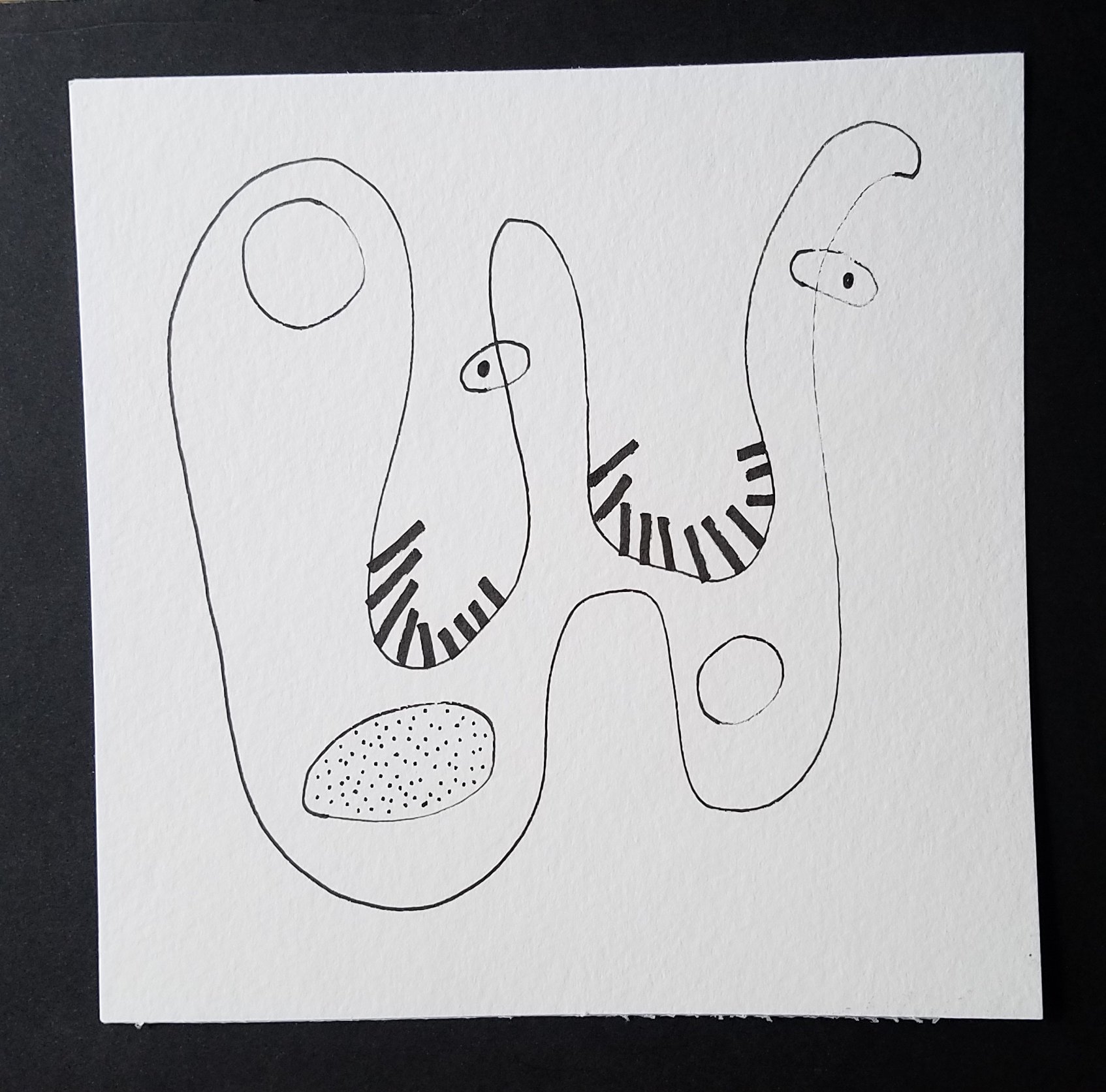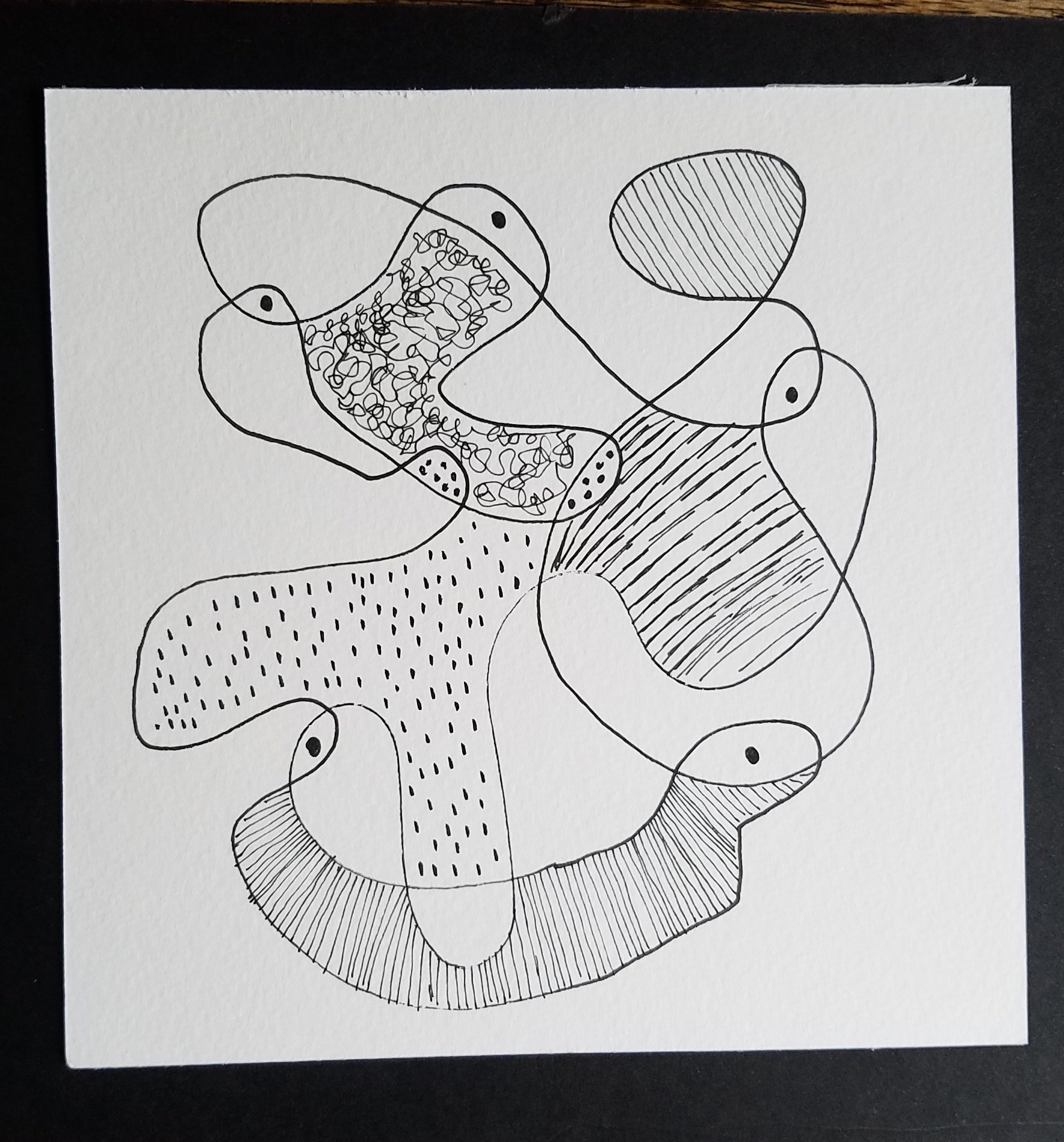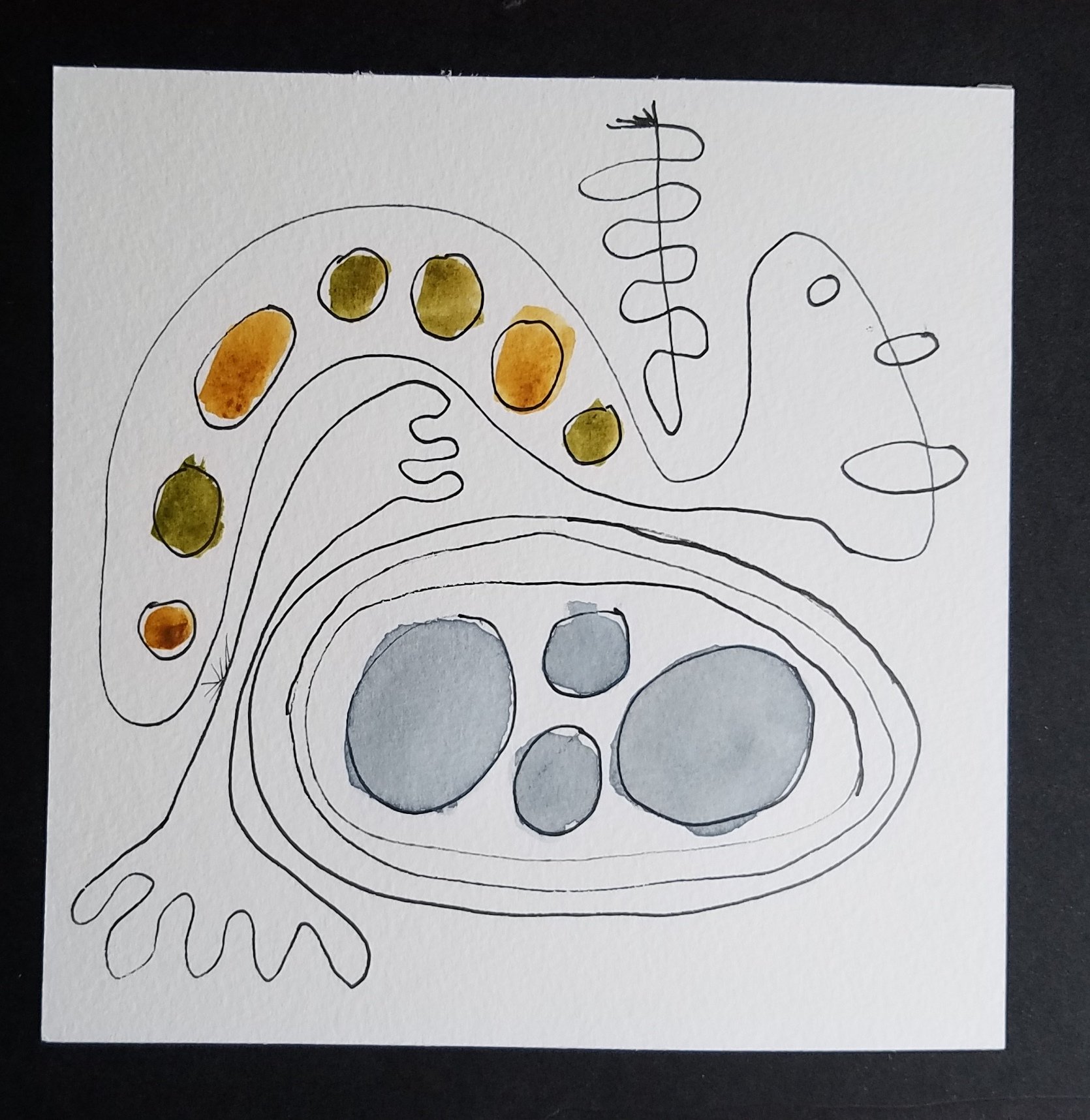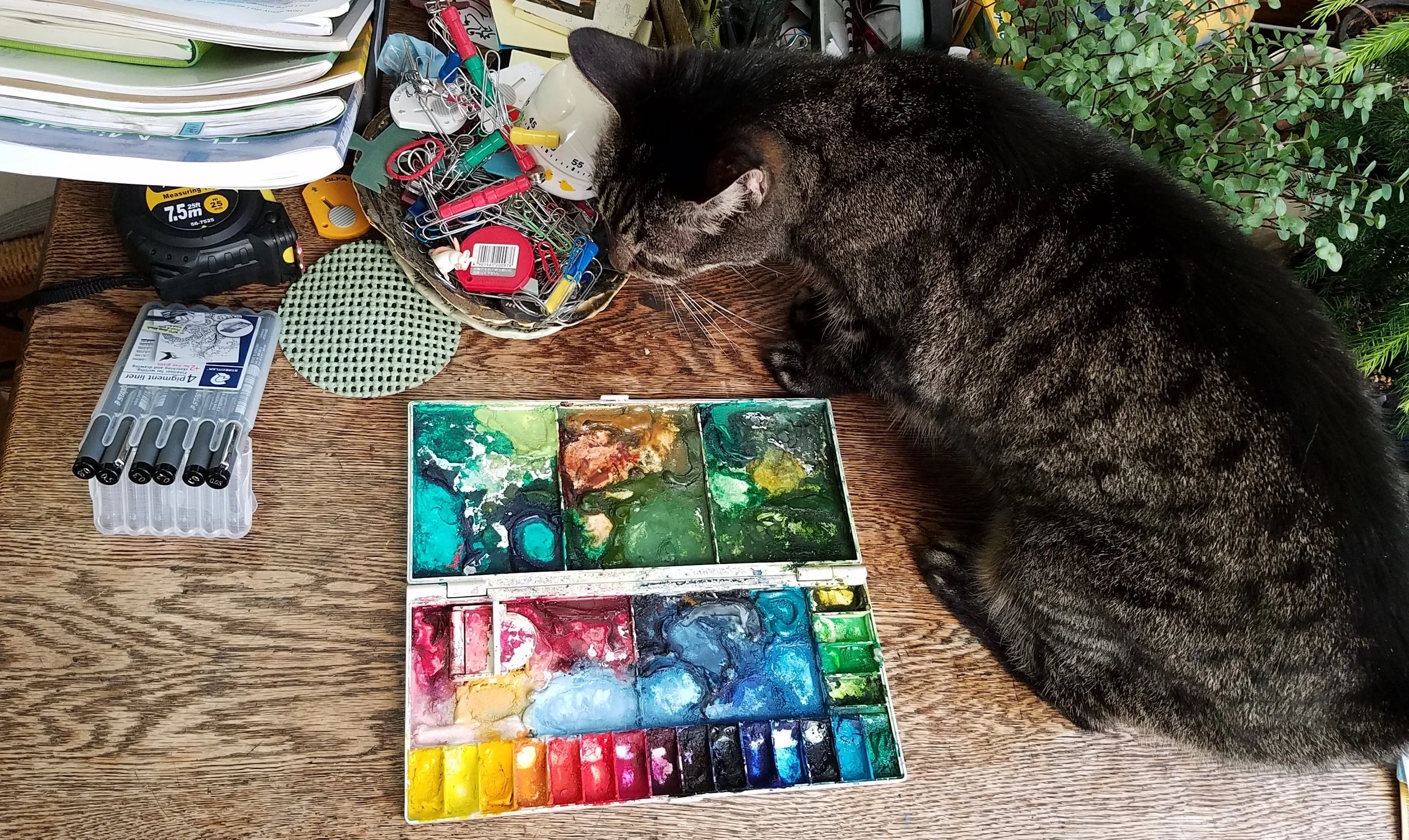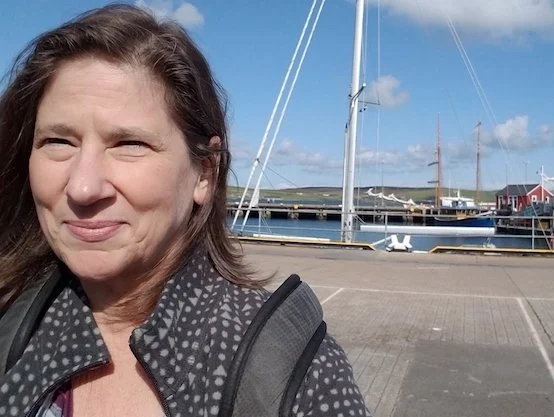Form, Form
Carol Moses
“Of course, isn’t all art responding?”
Interview by L. Valena
Can you just start by talking about what you responded to?
This series of videos I got was a woman throwing pots and then crushing them. I think the name of it was “A Form Not Worth Saving,” and I couldn’t really tell why they decided it wasn’t worth saving because it looked pretty good to me. But I’m not a potter. So anyway, they worked on a piece, pulled it up, pushed it down, pulled it up, pushed it down, and then made it hollow, and then made it nearly closed, and then squashed it. The whole thing was interesting. It was interesting to see them form it, and it still had a nice look after it was squashed.
What was your first reaction to that?
My first reaction was, “Gosh, this is going to be funny for me to make a 2D piece for.” When I signed up, I said I was okay with visual art or music because I often play music when I’m working and paint in response to that. So I was a little bit surprised. But I thought the potter had a nice look as an artist. You know, she was very focused and serious.
Yeah, we kind of classify video as visual art – thanks for rolling with it!
Well, part of the excitement of this program was to be open. I wondered if I was brave enough to check “Give me anything”, but I thought I might get dance in some form that I was completely ignorant of. I thought I would stick with visual and sound.
You really never know, and checking that box definitely opens up to all sorts of weird stuff. Where did you go from there?
Well, I decided to do a drawing rather than a painting because her form was white and I do a lot of black and white drawings. I also chose a square paper as opposed to rectangular, either portrait or landscape, because I wanted to focus on the form on the wheel and the wheel is round. That seemed like the closest fit. I do a lot of very loopy things in both my painting and drawing, and this thing was round and became oblong as it was squished. So that’s what I started with, loopiness. Also, she pulled it out and squished it down, so it changed form a number of times from cylindrical to kind of blobbish. I actually made three small drawings and paintings. The first one, I thought that when the thing was squished, it created a large open space with jagged edges, so to me, it looks sort of mouthish or like teeth. So I put that into my drawing. The second one, I just went with another large blob-oriented space with different patterns to fill in different spaces. And in the third one, I added in some physical bits from the scene. I have sort of hands there and I put in the colors that were present in the scene: her clothing and the green that was in the background. That was a little hat tip for the physical things in the scene, I guess.
It’s funny. I very much like doing collaborative work. I had a friend in the past and we liked each other’s work. We were both working on paper, so we would create a bunch of half-baked things, then give it to the other person and they would take it from there. So I really was hyped about this project, even though I felt funny. Like how is this responding to that? But anyway, I liked watching the potter.
I think it’s interesting hearing you talk about the form, the blobbiness, the way that the forms were moving together. In these pieces, do you think that your line is more mimicking the motion in the video or the form of what she was making?
It’s definitely true that she was going in and out, and up and down. So in some way it could be, on an instinctual level, some response to that kind of movement. And of course the wheel was constantly going around. And there at the end, she used a little cutting tool to separate the base or create a base or something. So it was a very interesting prompt, I’ll say that.
How does this work relate to the rest of your work?
I think that I definitely do a lot of work responsively. Of course, isn’t all art responding? We’re responding to the world around us. The things going on in our heads are our place in the world. I’m currently participating in an exhibition on artists’ responses to the climate crisis. In that one, I have a large grid of stunning pictures of lichen. There’s no connection between that and this. In that situation, I was in Maine in a very arboreal environment, surrounded by gigantic old trees. There was a big storm, and afterward, the ground was covered with this beautiful lichen that had fallen off, so I was photographing it.
But how does this work connect to my general work? Well, I definitely like to be in an environment and be stimulated and then generate. I just keep thinking of other examples. I did a residency in Iceland. At that time, the residency people were located on the 4th floor, overlooking the sea. There was the harbor, and then there was a peninsula with a glacier and a volcano, and all sorts of things in our line of sight, and then birds and water. So I think I made a lot of small paintings, kind of feeling my environment.
I really love this idea. I just keep thinking of more friends to send it to.
That’s awesome. Yeah, send them our way. We love that kind of referral process. It gives it a nice, close-knit community vibe that we really like. Do you have any advice for another artist who may be approaching this process for the first time?
Be happy and don’t worry and just be positive about what you’re doing.
I really think it’s a nifty concept and it’s good stimulation. In the beginning, when I first heard about [Bait/Switch], I thought it was sort of like telephone.
It’s like a really loose game of telephone, long-form, and it’s interdisciplinary of course. But it’s also like a game of badminton or something. You know, you get served something, and then you’re like, Whoa, where am I? I guess I’ll hit it back.
Another thing that I like about it is it’s very fitting for the times because it’s connecting us through electronic media, but it’s connecting people anywhere with any kind of work. I think that’s a very constructive aspect of it.
Call Number: M39FI | M40VA.moFo
Carol Moses is an artist living in Cambridge, MA, who creates non-representational tableaus, employing grids, patterns, repeated linear elements, and biomorphic forms, in a distinctive visual vocabulary. Discrete styles namely calligraphic, gestural, and geometric appear throughout her omnivorous practice that moves between drawing, painting, printmaking and photography. She attends international residencies, and shows work in Boston at studio 213 at 450 Harrison Ave, in SoWa. See more at http://carolmoses.com/


